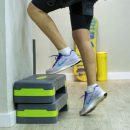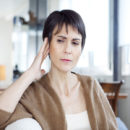Cranial Syntosis

What is cranial synostoses?
Positioning baby on one side is not the only cause of producing an unusual cranial form in infants early ossification of the cranial sutures or cranial synosteses may also be the culprit (1:2,000). Cranial synostoses come in many forms and several may appear at the same time. Depending on the severity of the deformation, babies with ossified cranial sutures may require surgery. The natural, gentle redirection of cranial growth after minimally invasive/endoscopic surgery requires helmet therapy. However, after surgery using other means CRANIOfORM® helmet therapy using a post-surgical helmet can help support and stabilize a successful operation.
How do you recognise cranial synostoses?
Making up about 50 percent of cases and thus the most frequently diagnosed is sagittal suture synostosis, which takes the form of an elongated, very narrow cranium. The form is referred to as a boat skull or in medical terms: Scaphocephalus. It involves the early ossification of the sagittal suture.
Sagittal suture synostosis
Making up about 50 percent of cases and thus the most frequently diagnosed is sagittal suture synostosis, which takes the form of an elongated, very narrow cranium. The form is referred to as a boat skull or in medical terms: Scaphocephalus. It involves the early ossification of the sagittal suture.
Coronal suture synostosis
If the coronal suture suffers from synostosis (coronal suture synostosis), the cranium will be asymmetrical and lack orbital coverage. This form of cranial synostosis is present in 15 to 20 percent of all cases. It can be both single and dual sided.
Metopic suture synostosis
Metopic suture synostosis is found in about 10 to 15 percent of patients. It takes the form of a peaked head, also known as bow skull medical term:Trigonocephalus.
Lambda suture synostosis
Should the rear of the head have an asymmetry which is not from the positioning of the infant, it may be a lambda suture synostosis, which is relatively rare (2 to 4 percent).
Practical examples have shown that a combination of several types of cranial suture ossifications may occur. They are often part of a syndrome. Examples of syndrome cranial synostoses include Morbus Crouzon, Morbus Apert, Morbus Pfeiffer and Muenke Syndrome. With Morbus Crouzon (1: 60,000) means all cranial sutures are ossified. The syndrome is manifested with small jaw and bulging eyes due to the ocular cavities being too small. Morbus Apert (1:60,000-80,000) is a dual sided synostosis of the coronal sutures, and also involves fused fingers or toes and a noticeable clover-shaped skull. These early infancy deformations are very rare.
How do you treat cranial synostoses?
Unusually some cranial suture synostosis can be treated with physical therapy, manual therapy, changes in the positioning of the child, osteopathy or helmet therapy. If the pressure on the child’s brain is in danger of slowing mental development, surgery is needed.
Two means are available to surgically treat the cranial deformations: As part of an early endoscopic surgery a limited amount of bone is removed from the ossified cranial suture. The procedure can be performed up to the end of month 3. After the operation the cranium will be directed to grow along its natural path using CRANIOfORM®-helmet therapy.
Later from about month 5 to 12, a singular surgical intervention can be used to create a harmonious head shape over the long term. CRANIOfORM®-helmet therapy also uses a special post-surgery helmet to support and stabilize the surgical success.














